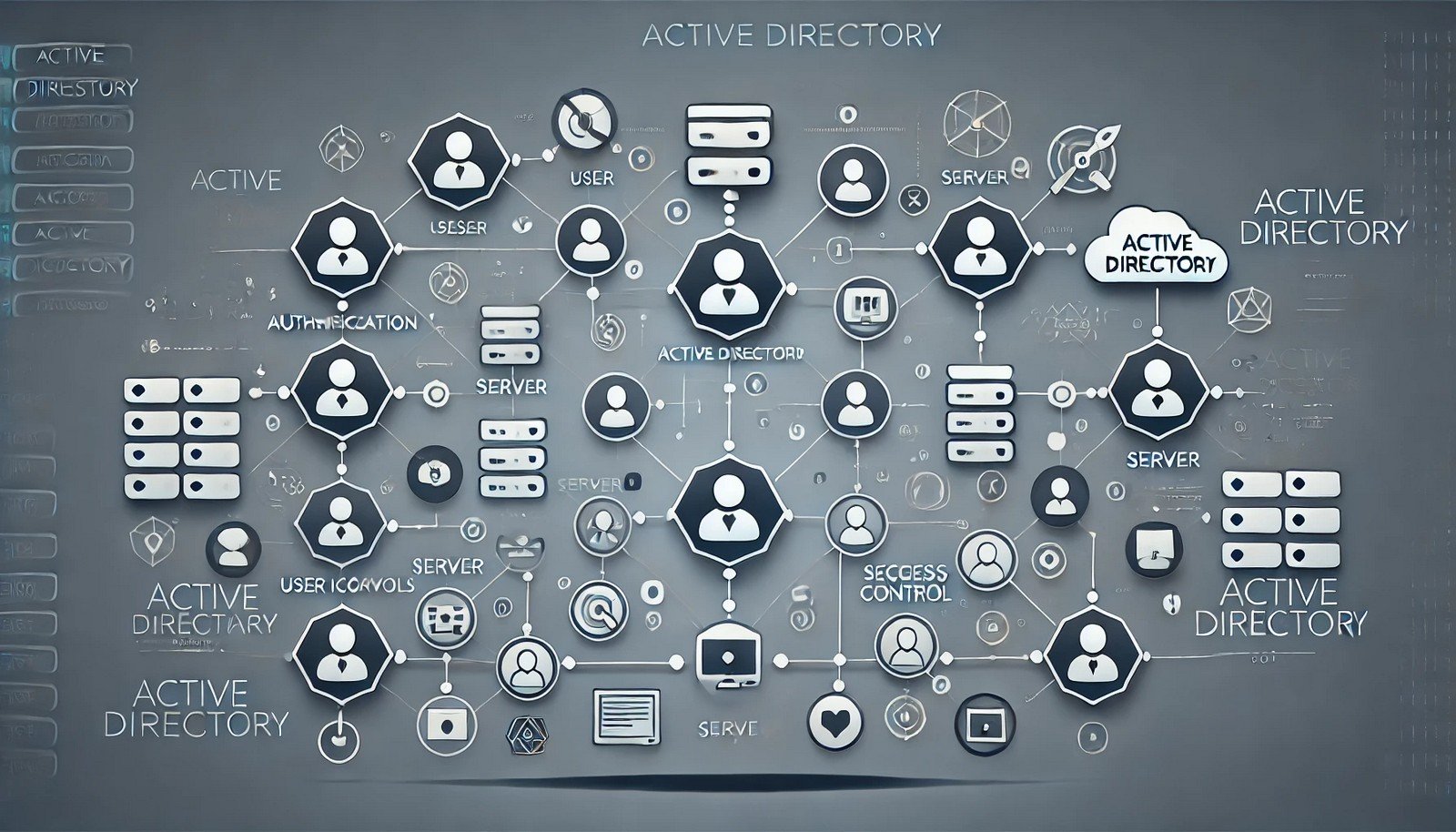Active Directory

(Representational Image | Source: Dall-E)
Quick Navigation:
- Active Directory Definition
- Active Directory Explained Easy
- Active Directory Origin
- Active Directory Etymology
- Active Directory Usage Trends
- Active Directory Usage
- Active Directory Examples in Context
- Active Directory FAQ
- Active Directory Related Words
Active Directory Definition
Active Directory (AD) is a directory service developed by Microsoft that manages and organizes information about resources in a networked environment. It provides authentication, authorization, and identity management services, allowing administrators to control user access, enforce security policies, and manage resources such as computers, printers, and applications. Active Directory operates using a hierarchical structure of domains, trees, and forests, enabling efficient organization and access control across enterprise environments.
Active Directory Explained Easy
Think of Active Directory like a big school directory. Imagine a school where every student, teacher, and classroom is listed in a giant book. The principal can decide who gets to enter certain rooms, what students can do on the playground, and who can access the library. Active Directory works the same way but for computers, managing who can log in, what files they can access, and which devices they can use.
Active Directory Origin
Active Directory was first introduced by Microsoft in Windows 2000 to provide a centralized way to manage network resources and user authentication. Before AD, network management was decentralized, leading to inefficiencies in large enterprises. With the evolution of IT infrastructure, AD has grown to integrate cloud-based identity services such as Azure Active Directory.
Active Directory Etymology
The term “Active Directory” comes from the idea of an “active” (dynamic and regularly updated) directory (a structured database storing information about users and resources).
Active Directory Usage Trends
Active Directory has remained a cornerstone of enterprise IT environments for over two decades. With the rise of cloud computing, many organizations have adopted hybrid approaches, combining on-premises AD with cloud-based identity solutions like Azure Active Directory. The increasing focus on cybersecurity has also led to advancements in AD security, such as multi-factor authentication (MFA) and zero-trust security models.
Active Directory Usage
- Formal/Technical Tagging:
- Directory Service
- Network Security
- Identity Management - Typical Collocations:
- "Active Directory domain controller"
- "Active Directory authentication"
- "Active Directory group policy"
- "Active Directory federation services"
Active Directory Examples in Context
- A company uses Active Directory to ensure only authorized employees can access confidential files.
- IT administrators use Group Policy in Active Directory to enforce password policies across all employees.
- Schools and universities use Active Directory to manage student and staff logins for shared computers and software access.
Active Directory FAQ
- What is Active Directory?
Active Directory is a Microsoft directory service that manages users, computers, and network resources in a structured way. - How does Active Directory work?
It uses a hierarchical structure to organize and control access to resources, enforcing security policies and authentication. - What is the role of a domain controller in Active Directory?
A domain controller is a server that manages authentication requests and enforces security rules in an AD environment. - Is Active Directory still relevant in cloud computing?
Yes, many organizations use hybrid solutions combining on-premises AD with cloud-based services like Azure AD. - What are Organizational Units (OUs) in Active Directory?
OUs are containers within AD used to group users, computers, and devices for easier management and policy application. - How does Active Directory enhance security?
AD supports authentication protocols like Kerberos, enforces security policies, and integrates with multi-factor authentication. - What are Group Policies in Active Directory?
Group Policies allow administrators to control system settings, security, and user permissions across all devices in the network. - Can Active Directory be used for Linux-based systems?
Yes, AD can integrate with Linux systems using services like Samba or LDAP authentication. - What is the difference between Active Directory and Azure Active Directory?
Active Directory is primarily for on-premises environments, while Azure AD is a cloud-based identity management service. - How do companies back up Active Directory?
They use system state backups, AD snapshots, and third-party backup solutions to ensure data recovery in case of failure.
Active Directory Related Words
- Categories/Topics:
- Network Administration
- Enterprise Security
- Identity and Access Management
Did you know?
Microsoft Active Directory was initially developed to replace Windows NT’s domain model, which was inefficient for large-scale networks. Since then, it has become a critical component of enterprise IT infrastructure, supporting millions of users worldwide in organizations of all sizes.
PicDictionary.com is an online dictionary in pictures. If you have questions or suggestions, please reach out to us on WhatsApp or Twitter.Authors | Arjun Vishnu | @ArjunAndVishnu

I am Vishnu. I like AI, Linux, Single Board Computers, and Cloud Computing. I create the web & video content, and I also write for popular websites.
My younger brother, Arjun handles image & video editing. Together, we run a YouTube Channel that's focused on reviewing gadgets and explaining technology.



Comments powered by CComment